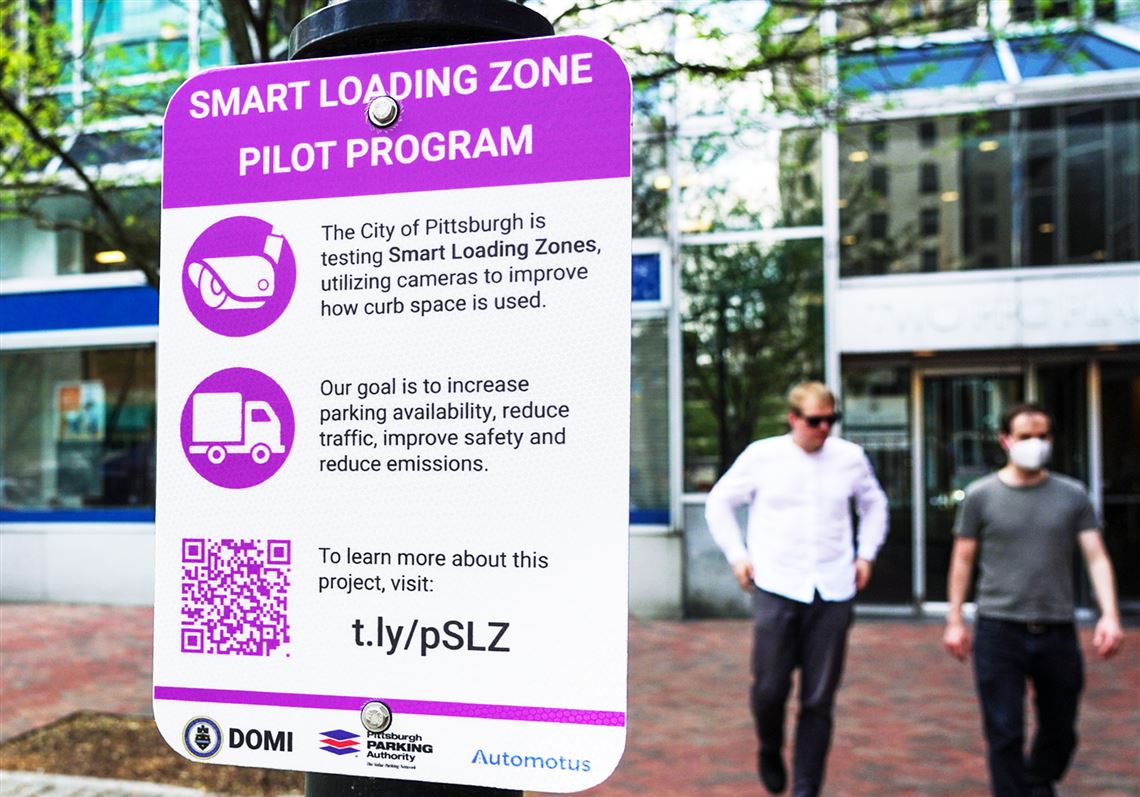Despite previous pushback from local businesses regarding purple curb Smart Loading Zones, Pittsburgh City Council is looking to extend the program indefinitely.
The Smart Loading Zones — which some business owners have previously dubbed “a money grab” — were implemented last year as a way for quick loading and unloading of supplies at businesses.
The street parking spots marked by purple painted curbs have a tiered fee structure. The spot is free for the first 15 minutes. Anyone parked for 30 or more minutes will be charged the regular meter rates, which is $4 Downtown, $3 in Oakland and the Strip District and $2 in Squirrel Hill and Lawrenceville. Among those five neighborhoods, there are 55 loading zones, but the city is also looking to expand those.
Anyone parked longer than an hour will be charged 200% the hourly meter rate and 300% for more than two hours.
The pilot program, which was supposed to sunset after three years, would have been in effect until the end of 2025. Legislation in front of council seeks to remove that end date, which would allow the program to continue indefinitely.
In the two years the program has been in effect, the city estimates it has reduced double parking by 98% “an incredible safety benefit of the program,” according to Rylan Seifert, the city’s policy analyst for curb management.
The goal of the program was to increase curb turnover as, particularly in this post-pandemic era, there has been an influx in deliveries — whether it be from food service organizations like UberEats and DoorDash to online orders from Amazon.
The initial pilot program was grant funded, so as the city transitions out of the pilot, it will be contracting with the Pittsburgh Parking Authority, which will take over management of the program. Any revenue earned from the program beyond operating costs will be split between the city and the parking authority.
Last fall, some business owners who saw the loading zones implemented outside their shops were concerned about the program. Many of their concerns surrounded the removal of the loading zones that were already there, which were free for delivery drivers to park in, typically used for supply deliveries for restaurants.
John Mineo, owner of Mineo’s Pizza House, said he believed the issue wasn’t with the loading zone but the lack of enforcement from the parking authority regarding people who illegally park there.
Councilman Bob Charland during Wednesday’s council meeting said he was still hearing from businesses in his district that were concerned about the loading zones. Mr. Charland asked that the Department of Mobility and Infrastructure do another round of outreach to businesses near the zones so that they can understand the purpose.
Despite concerns from businesses, people are using the spaces.
Since the pilot was created, about 700,000 people have parked in those spaces, Seifert said. Between 70% and 80% of those parkers were there and left within the 15-minute grace period. The city has also seen a 70% increase in turnover.
“So the number of vehicles parking in the spaces has gone up, and people are also parking there for less time,” Seifert said.
Councilwoman Barb Warwick, after hearing those statistics, noted that even though there had been “complaints” about the program, “overall it is a resounding success.”
Council will take a final vote on the expansion as early as next Tuesday.
First Published: November 20, 2024, 6:43 p.m.
Updated: November 21, 2024, 3:24 a.m.


















